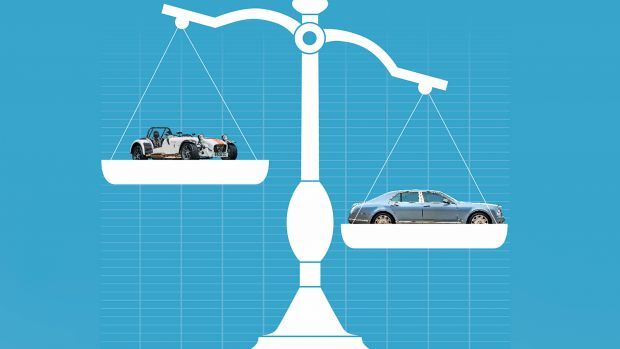What is kerb weight and how much does your car weigh?
How can one car have different weights? We explain the different kerb weight figures quoted and what they mean
 How can one car have different weights? We explain the different kerb weight figures quoted and what they mean
How can one car have different weights? We explain the different kerb weight figures quoted and what they meanFinding out how much a car weighs can be trickier than it sounds
A cursory internet search for kerb weight figures on a specific model can return widely varying results. Why is this? Well, manufacturers can cite various weight figures according to different official car kerb weight standards, some of which aren’t particularly well-defined, and this allows them to provide figures that are lighter than the model’s true operational weight. Let’s take as an example the BMW Z4 M Coupe of 2006-2009. Conceivably, the quoted weight of the little couple could vary by as much as 150kg depending on which standard it is measured against.
The standards
The kerb weight that we like to quote here at evo is the the DIN figure – that’s Deutsches Institut für Normung, or German Institute for Standardisation. This is the weight of the car with all the fluids necessary for operation, including a 90 per cent full tank of fuel. For the Z4 M Coupe this is 1420kg. BMW also quotes an EU kerb weight (sometimes called EEC kerb weight) of 1495kg. This is the DIN figure plus an extra 75kg for ‘driver and luggage’, and is the weight declared for emissions testing.
There is also a ‘dry weight’, which has no standard and is open to a number of interpretations. The most straightforward is the car with an empty fuel tank (as sometimes quoted by Lotus), but there is also a ‘shipping’ dry weight, historically used by some race car manufacturers and Italian sports car makers. This means no fluids whatsoever – no oil in the engine/ gearbox/differential, no coolant, no air con refrigerant, no battery acid – and also no toolkit, spare wheel, handbook, etc.
Quoting a dry weight can therefore make a car’s weight, and by extension its power- to-weight figure, appear far more favourable than those of rival cars using DIN or EU figures. A separate issue is Gross Vehicle Weight (GVW). This is the maximum the vehicle can weigh on the road when loaded with passengers and cargo.
Common car kerb weight measurements
DIN kerb weight
Weight of the car with all fluids necessary for operation, including a 90 per cent full fuel tank.
EU kerb weight
The EU kerb weight adds a further 75kg to the (above) DIN weight to imitate a driver and luggage.
Dry kerb weight
There’s no fixed standard for a dry weight measurement, it’s up for interpretation. Often the dry weight implies an empty fuel tank, however manufacturers can quote a figure for a car that is completeley free of any fluids, which is referred to as a dry shipping weight.


